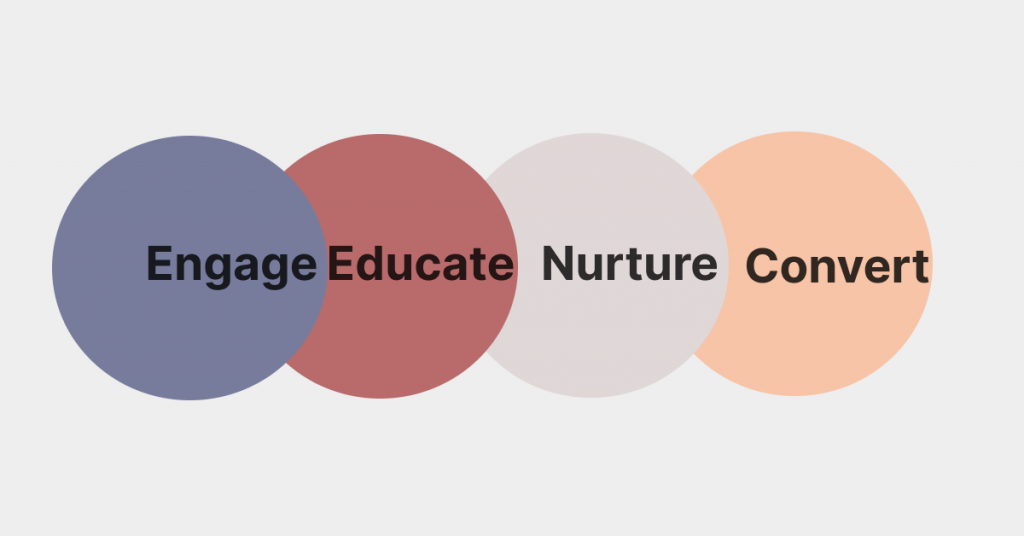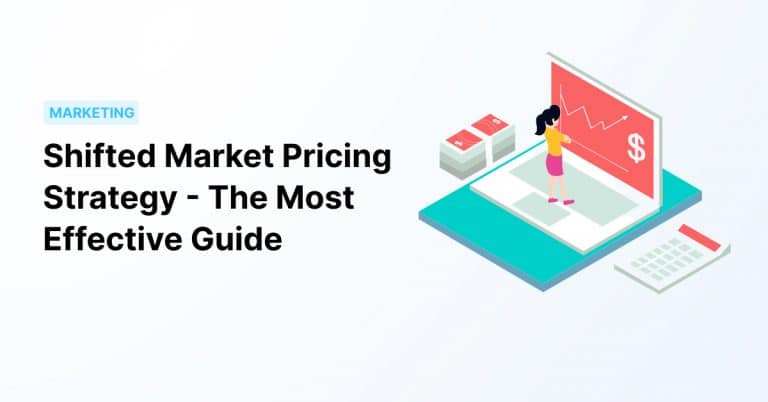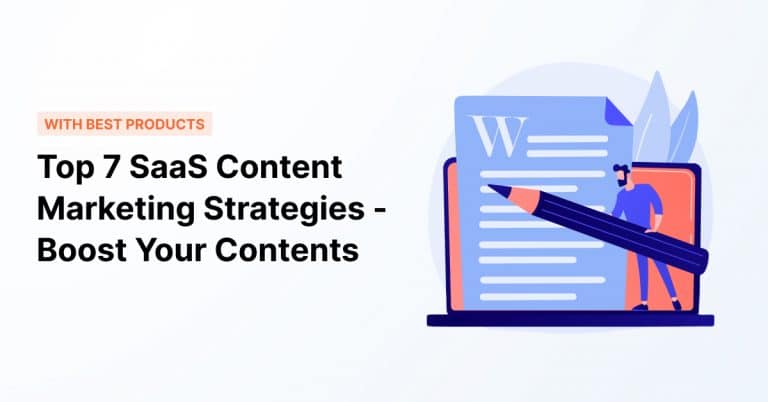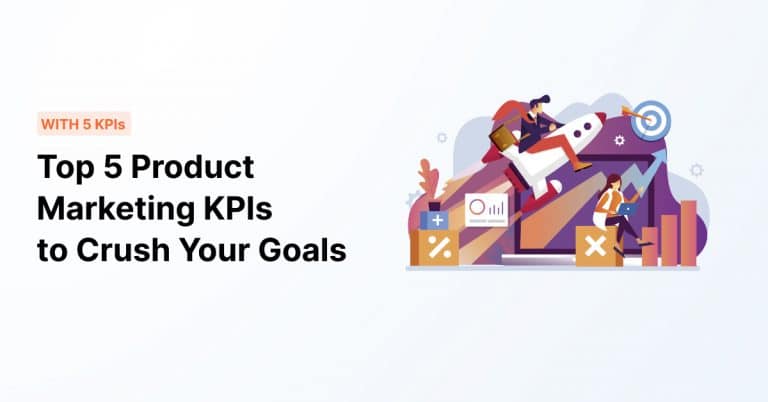People are willing to engage with a product or service as long as it provides high-quality content and resources that speak directly to them.
B2B marketing is not only about leading your audience to your product; it is about creating demand for your product by raising awareness and credibility.
Demand generation strategies get into the game at this point.
What is Demand Generation?
Demand generation is a marketing strategy to create awareness, interest, and credibility for the company’s growth at its simplest. It aims to develop a trusted go-to-market strategy that leads your users down the sales funnel, solves their problems, and educates them with high-quality content. It leverages several kinds of data to coordinate your sales and marketing teams to touch every point in the customer journey with your product and service. Demand generation strategies mostly work for B2B businesses to develop awareness and interest amongst their users.
We can summarize the demand gen marketing process in 4 steps;
1. Providing high-quality content/resources and creating brand awareness
2. Creating demand and shaping the perspective of your users
3. Converting this demand into sales, solving the problems of your customers
4. Keep engaging with your customers and monitoring the performance metrics (KPI)
What is the Difference between Demand Generation and Lead Generation?
As it can be understood from the phrases, Demand Generation is the creation of demand for a product or service through marketing strategy while Lead Generation means collecting information to build a marketing database for email or marketing channels. Content Marketing Institute explains their difference in a single sentence as “Demand generation is focused on shaping the audience’s perspective, while lead generation is focused on capturing their information.”
5 Demand Generation Strategies to Improve Your B2B Marketing

1. Improve Your Content Marketing
If you educate your customer base and guide them through the funnel and onboarding with high-quality content and resources, congrats, you have accomplished the first step of your demand generation strategy. Content is the cornerstone of any demand generation strategies. You need to focus on informing, educating, and inspiring your B2B customer profile. There are several types of content you can create:
- Blog: Blog articles are one of the most powerful weapons to be distinguished on Google and educate your audience.
- Video: Video contents are easy to digest. So, it is also powerful to provide informative content related to your product on Youtube.
- Case Study: Case studies show proven success. So, it is important to increase credibility.
- Podcast/Webinar: Podcasts and webinar conferences have their own kind of limited audience -still not many people are into them. However, Quality matters, not quantity. You can reach a specific types of audiences for specific topics.
- Channel Partners: Channel partnering such as co-branding relationships also a great way to distribute your content and acquire different customer profiles.
- eBook: Traditional but efficient way of content marketing. Some people are willing to trust on textbooks and whitepapers as they are well-rounded.
2. Measure Demand Generation Strategies with KPIs
Without numbers, every growth and marketing strategy remains half. Especially for B2B Demand Generation Marketing, it enables you to gain more credibility. If you accurately measure demand generation strategies through KPIs, you can track the effectiveness of all steps and it’s more likely to grow your company – very fast!
Yes, it requires tracking clicks, sessions, engagements, etc. But it is more than these.
- Demand Generation Conversion Rate: The purpose of your demand generation marketing is to acquire customers to your product -you use multiple channels to get traffic to your webpages. It’s essential to remember that the demand generation funnel conversion rate depends on the quality of your content.
Total Convesions / Total Leads in Funny * 100
- Cost Per Acquisition (CPA): It basically means cost per sale. The metric measures the cost to acquire a paying customer through a specific channel or campaign, which is important for knowing how much you have to spend to maintain your funnel strategy.
CPA = Total Ad Expense / Total Attributed Conversations
- Customer Lifetime Value (CLV): Without measuring CLV, a business might spend too much to acquire new customers whose lifetime value isn’t worth the cost. If you identify your most valuable group of customers, you can focus on keep them as long-term customers.
CLV = (Annual Revenue per Customer * Customer Relationship in Years) – Customer Acquisition Cost
- Marketing Customer Acquisition Cost (CAC): Again, you need to be profitable in the long run on your demand generation strategy. Unless you measure your customer acquisiton cost, you may find yourself spend too much for nothing. It keep marketers focused on creating demand that will worth the cost.
Marketing CAC = Cost of Marketing / Opportunities Closed-Won
- Average Revenue per Account (ARPA): It is valuable for comparing groups of accounts by month. This is helpful for exposing right straregy for your demand marketing. It is calculated by dividing your total monthly recurring revenue (MRR) by the total number of accounts.
($) Total Monthly Recurring Revenue / (#) Total Accounts = ($) Average Revenue Per Account (ARPA)
- Net New Revenue: This metrics shows the total amount of revenue generated by all marketing activities and all types of sources, which is important to the big picture of your demand generation strategies.
($) Revenue = (#) Sales * ($) Avarage Sales Price
- Sales Velocity: This metric measure how fast your business is acquiring new customers.
Sales Velocity = (#) Opportunities * ($) Amount * (%) Win Rate / Length of Sale
3. UI Design and Inbound Marketing
Your landing page is where users first engage with your product and where you can find most likely potential customers. So, it should aim to be designed to draw visitors’ attention, provide benefits or call actions. In demand generation marketing, it is like an artery of your product. Inbound marketing is very related to your UI design. It aims to build long-lasting relationships with customers and empower them to reach their goals at any stage in their journey with your product -which is the main purpose of demand generation marketing. You can include several components into your UI design and inbound marketing together to improve your demand generation marketing.
- CTA: It is important to lead your users to action with valuable content.
- Knowledge Base: We are keep saying it’s all about educating your customers. Creating a knowledge base is the most efficient way to raise awareness and interest.
- Blog: Educate and inform your users about the product, service, industry or any kinds of topic related to your work
- Release Notes: It is important to show that your product is changing and improving harder better faster stronger. The best way to show that is publishing release notes. AnnounceKit is a no-code release notes tool that enables you to announce product updates to improve your UI design and inbound marketing.
Demand Generation Strategies – The Result

If you cannot generate demand, you cannot acquire new customers and grow your business. The key to these demand generation strategies is to create awareness, interest, and credibility for your audience inside and out. Understand what their needs are and how you can nurture them.







